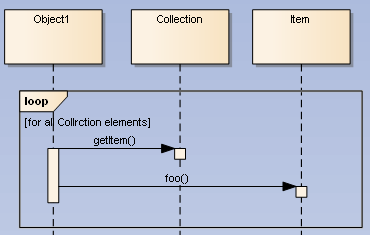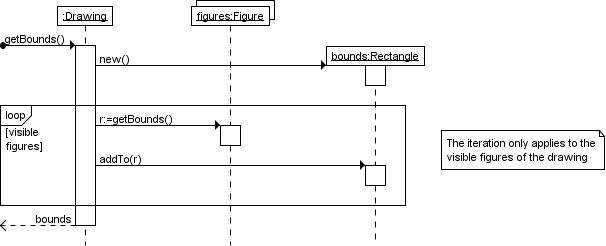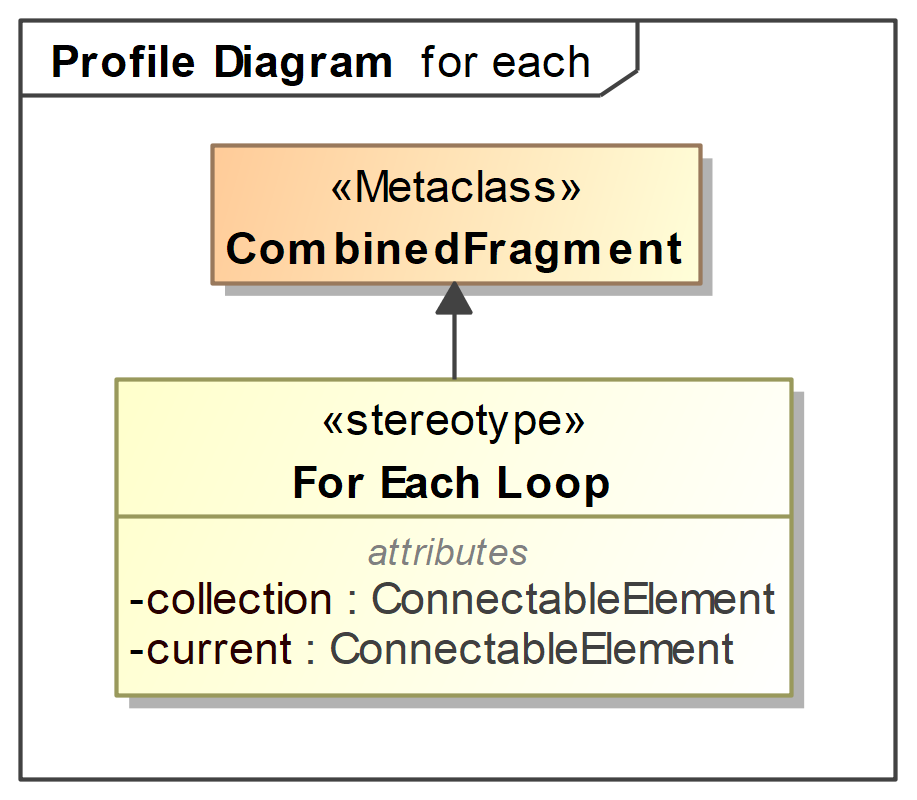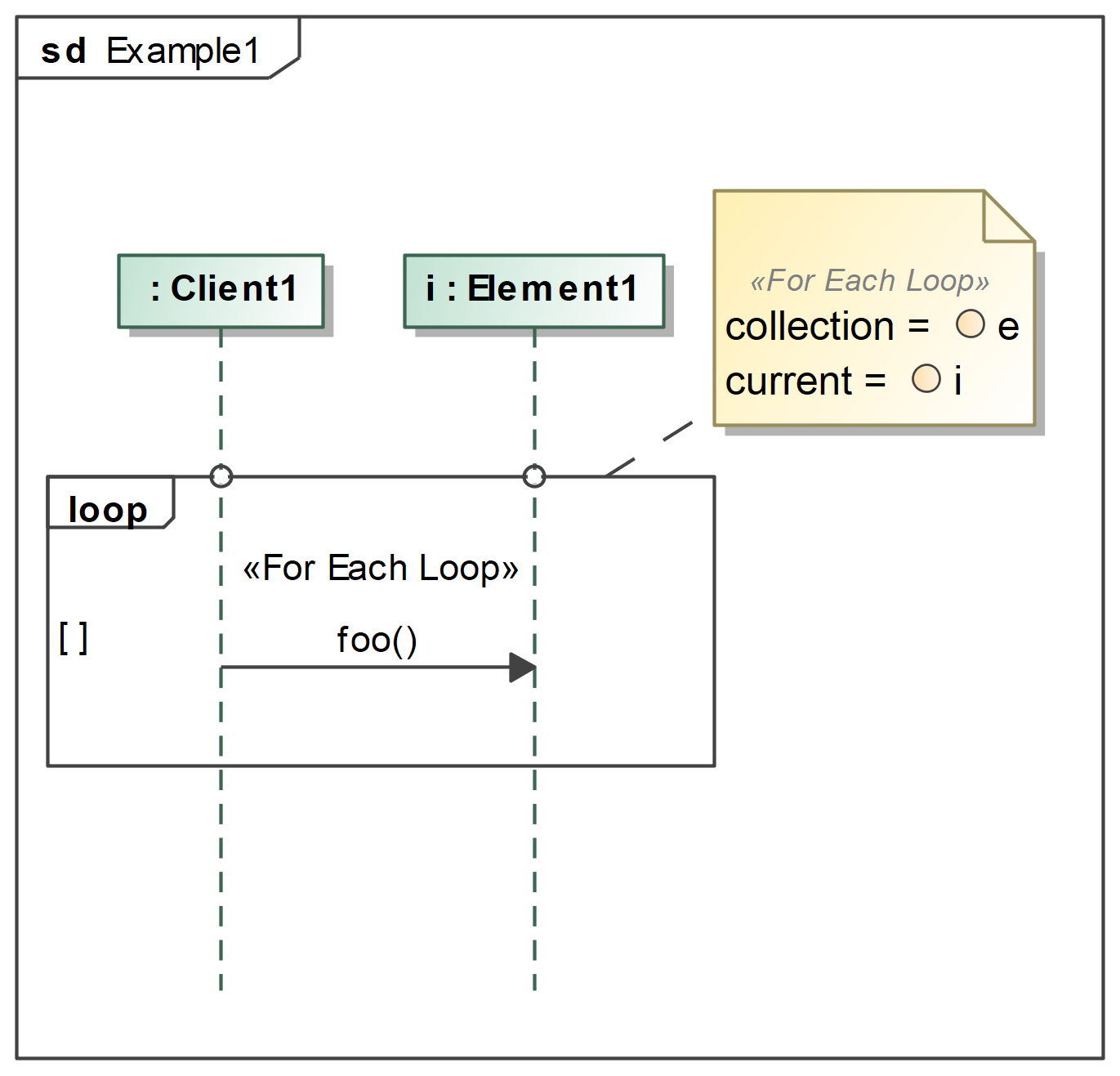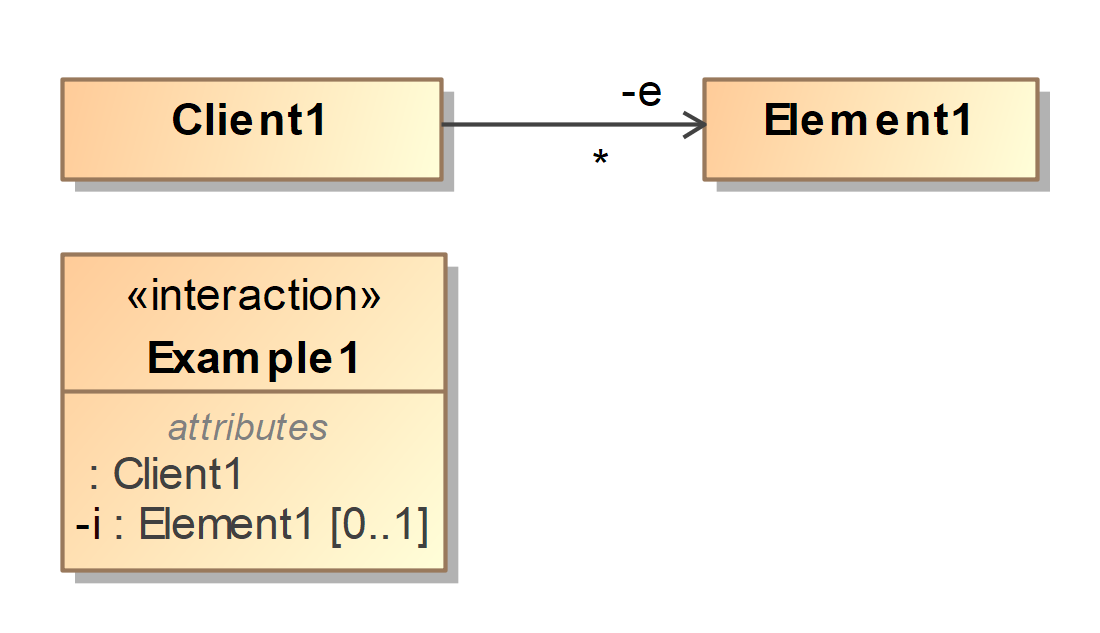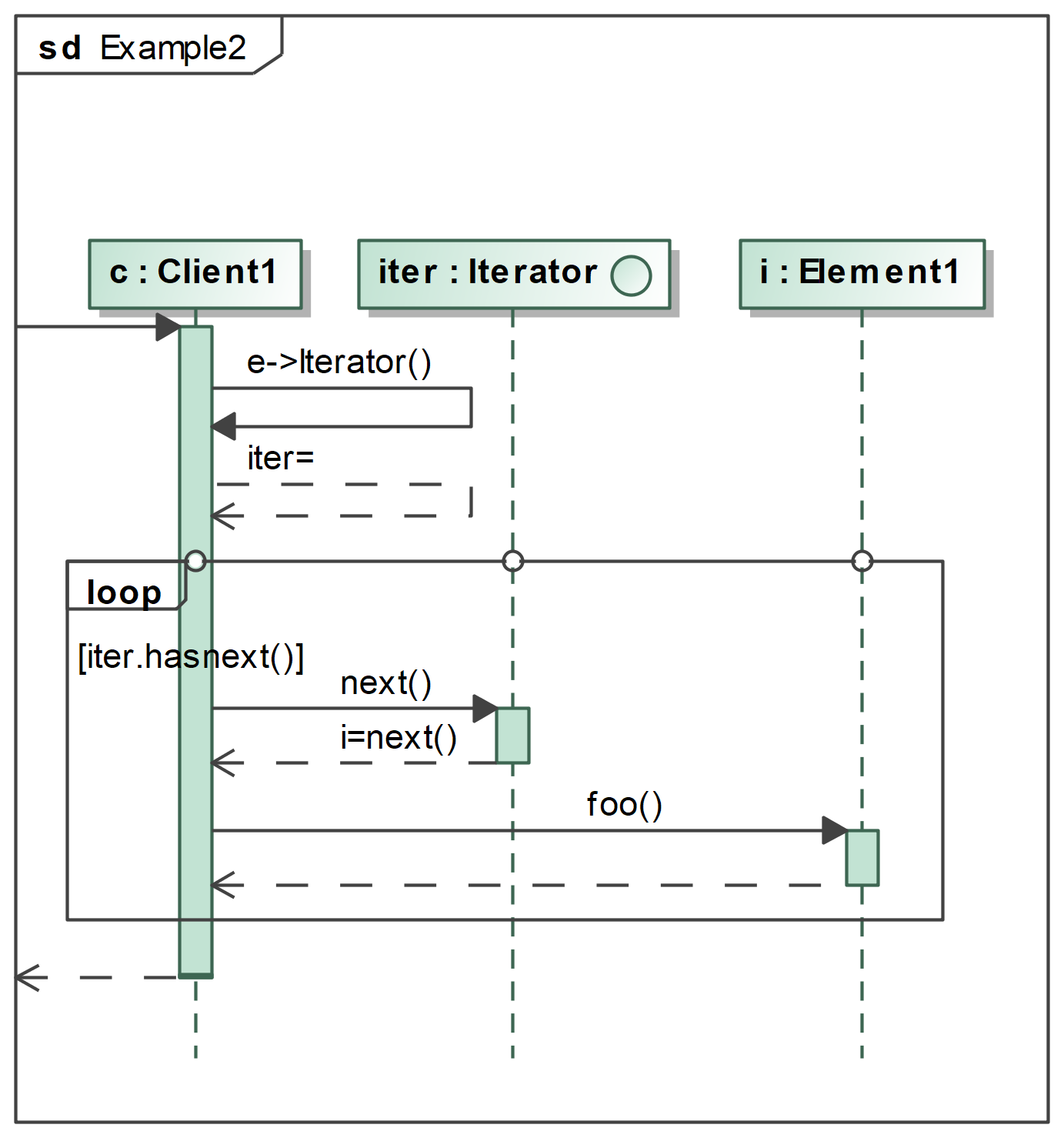Unfortunately it cannot be done. The loop operator has a guard condition and a number of iterations between minint and maxint. I think, this doesn't allow "for each loop" semantics. If you want to add this, it must be done with a user defined stereotype «for each loop»:
![stereotype for <code>for each loop</code>s]() An example usage is:
An example usage is:
![example usage]()
Please note that the note symbol is a not a comment, but the notation for the stereotype properties. They reference the property e of Client1 and i of the Interaction Example1 (see diagram below). The i-Property is represented by a Lifeline and will refer to a different object in each occurrence of the loop content. This is achieved here by the user defined semantics of my «for each loop».
![Class diagram]()
As an alternative you could add a semantic free comment with the same content. Misusing the guard for this purpose is not recommended.
If you want to use a java like iterator the diagram could look like this:
![solution with iterator]()
This diagram also shows, how to refer to different objects over time: The return value of a reply message is assigned to a Property of the Interaction or of the Class represented by the Lifeline or a Parameter.

